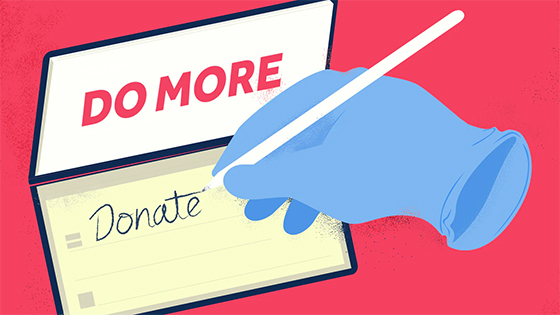Quid Pro Quo Not-for-Profit Contributions – What to Know

Charitable contributions aren’t always eligible for tax deductions — even when the not-for-profit recipient is tax exempt and the donor itemizes. Take “quid pro quo” donations. These transactions occur when your organization receives a payment that includes a contribution and you provide the donor with goods or services valued for less than the total payment.
Let’s take a closer look.
Meeting Obligations
Quid pro quo arrangements create an obligation for your not-for-profit. If you receive more than $75 and you provide a benefit to the donor, you must advise the donor that it’s a quid pro quo contribution. In such cases, provide written notice to donors that they can deduct only the amount in excess of the value of the goods or services they receive in return. Also provide donors with a good faith estimate of the value of the goods or services provided in return.
This written acknowledgment must be provided when the donation is solicited or when it’s received. For example, if you’re holding a charity dinner each ticket sold should disclose the tax-deductible portion of the ticket price. Additionally, the disclosure must be in a readily visible format — in other words, no small print. Examples can be found in IRS Publication 1771, “Charitable Contributions — Substantiation and Disclosure Requirements.”
Valuing Goods and Services
Before you can inform donors of the value of goods or services, you must put a price on them. Let’s say your not-for-profit hosts a dinner for top donors at a high-end restaurant and pays for their meals. The donors then make large gifts. Here, determining value is fairly simple. The amount your organization paid for the meal would be considered the fair market value, and only the amount of the contributions in excess of this value would be tax-deductible for the donor.
But what if your charity sponsors a gala dinner with live music where the banquet facility discounts the food and the band performs gratis — both as contributions to your organization? To establish the value to be reported to donors, determine what it would cost someone to attend a similar event. In this instance, you’d need to research comparable costs at local restaurants or hotels for a dinner with entertainment. Or you could ask the banquet facility and the band to tell you what they normally charge customers that aren’t charities.
For donated auction items, ask what a willing buyer would pay for them in an “arm’s length” transaction — that is, in the marketplace. Report each item’s value on the item bid cards.
Risking Penalties
There are some exceptions to these quid pro quo rules. But in most cases, not-for-profits risk financial penalties if they fail to furnish proper acknowledgment and disclosure to donors. Contact us if you have questions or need clarification.

